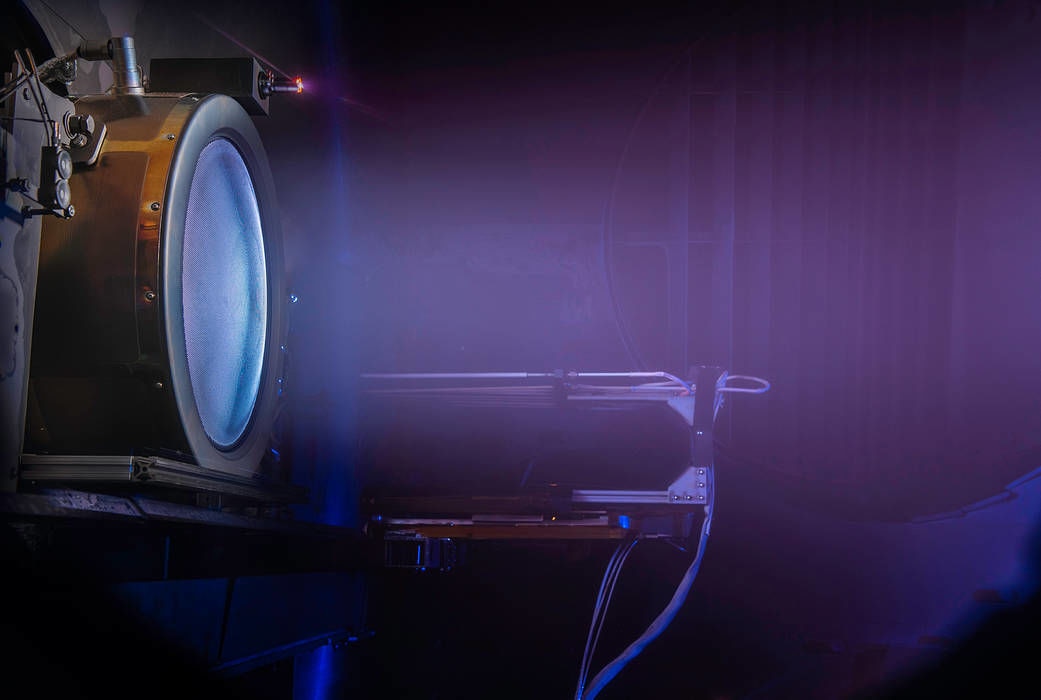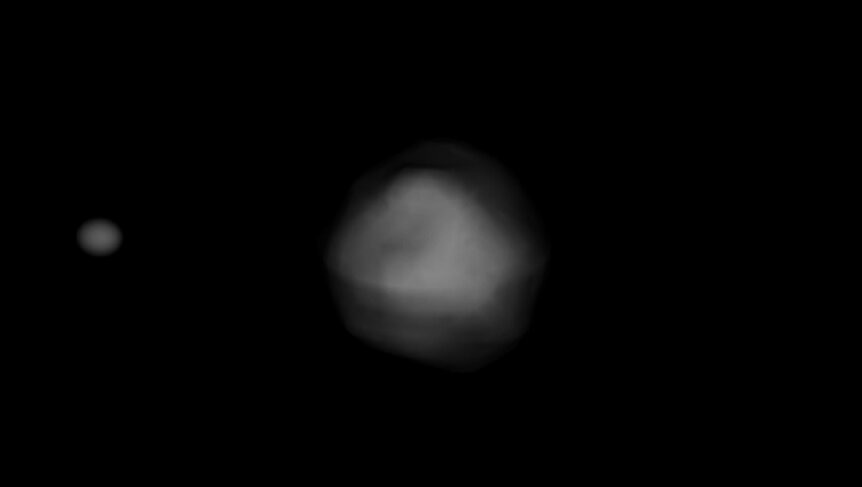Create a free profile to get unlimited access to exclusive videos, sweepstakes, and more!
NASA is wielding a superpowered ion engine to redirect asteroids next year

Maybe Deep Impact isn’t happening yet (though the enemy there was a comet), but the threat of an asteroid head-butting Earth and making humans as extinct as the dinosaurs doesn't only exist in science fiction.
NASA is taking no chances. Because we don’t want our species to go the way of the brontosaurus, the space agency has been upgrading its DART (Double Asteroid Redirection Test) mission so it can take off next July. DART is powered by NASA’s Evolutionary Xenon Thruster—Commercial (NEXT-C), a powerful ion engine that is now being tested for the mission. It will get a chance to show what it’s made of in a demo that will have it confronting the non-threatening binary asteroid system Didymos.
NEXT-C may not be a rocket engine that needs an immense amount of thrust to lift off, but it’s one of the most powerful ion drives ever. It has triple the power of the NSTAR drives on NASA’s Dawn and Deep Space One spacecraft, and those were not to be messed with. Its thruster and power processing unit (PPU) are its primary components. The thruster went through a gauntlet of tests, including vibration, thermal vaccum and performance trials, plus extreme launch vibration and the brutal cold of space, before scientists determined it was ready to join forces with the PPU.
Just to give an idea on how powerful NEXT-C is, it is capable of 6.9 kilowatts thrust power. Replace thrust power with electricity, and that many kilowatts could keep fourteen 32-inch plasma TVs running. Thrust times duration over motor burn time is its total impulse. It beats out every other ion engine’s total impulse, and its specific impulse, the fuel efficiency of a rocket engine, is much higher than NSTAR’s.
Ion drives like NEXT-C don't burn fuel like a rocket engine. They are usually fueled with xenon through a chamber that encounters one of two accelerator grids, and the xenon ions are charged positive with the electricity absorbed by solar arrays. The negative charge of the second grid instantly draws the positively charged ions, which produces monster thrust by propelling them out of the engine and blasting the spacecraft into the sky.
DART will be collaborating with the Italian Space Agency’s LICIA (Light Italian Cubesat for Imaging of Asteroids) cubesats, when it reaches Didymos B. Smashing into this asteroid is predicted to change its rotation period by altering its orbital velocity by half a millimeter per second. Telescopes on Earth will be able to see this. As the spacecraft tries to push the asteroid out of the way, LICIA will image the process and capture impact debris to bring back to Earth. While DART will be crushed by the collision after leaving behind a huge crater, the ESA’s upcoming Hera mission will later get a closeup of the impact’s effects and the innards of this asteroid.
Didymos might not be on a deadly trajectory, but at 2,560 feet in diameter, Didymos A, the larger of the two asteroids, is about the size of something that could turn our planet into a post-apocalyptic nightmare. What happened 66 million years ago could easily happen again if something out of space comes for us.
The impact of the Chicxulub asteroid didn’t obliterate almost everything in one day. It set off volcanoes that belched enormous flows of magma and basically set the planet on fire. Whatever didn’t burn out from the heat, choke on ash, drown in a tsunami or starve after its food sources died out faced a killer nuclear winter. So much ash was sent flying into the sky that it blocked solar light and heat necessary for the survival of most life-forms on Earth. Whatever didn’t perish during the first round froze to death in the second. Most plants withered. Not many creatures made it out alive.
If the DART demo works, that will mean Earth has at least one defense against another dinopocalypse.















